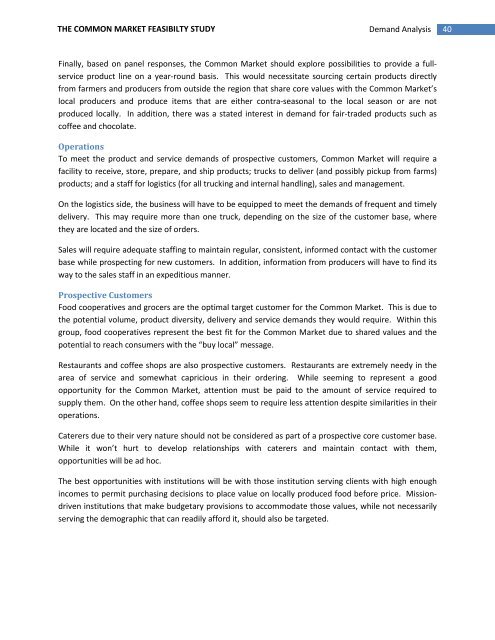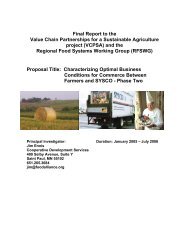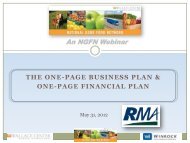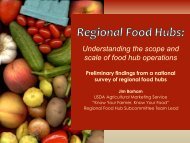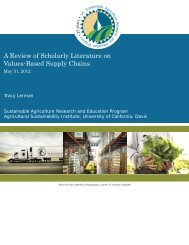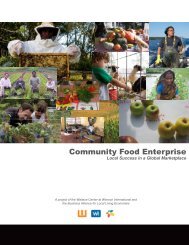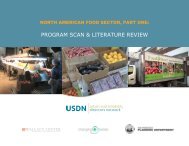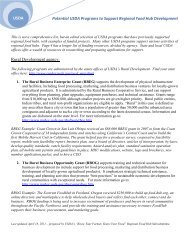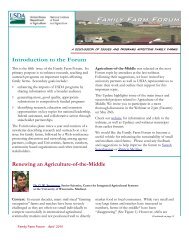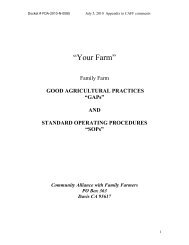The Common Market Feasibility Study - Agricultural Marketing Service
The Common Market Feasibility Study - Agricultural Marketing Service
The Common Market Feasibility Study - Agricultural Marketing Service
Create successful ePaper yourself
Turn your PDF publications into a flip-book with our unique Google optimized e-Paper software.
THE COMMON MARKET FEASIBILTY STUDYDemand Analysis40Finally, based on panel responses, the <strong>Common</strong> <strong>Market</strong> should explore possibilities to provide a fullserviceproduct line on a year-round basis. This would necessitate sourcing certain products directlyfrom farmers and producers from outside the region that share core values with the <strong>Common</strong> <strong>Market</strong>’slocal producers and produce items that are either contra-seasonal to the local season or are notproduced locally. In addition, there was a stated interest in demand for fair-traded products such ascoffee and chocolate.OperationsTo meet the product and service demands of prospective customers, <strong>Common</strong> <strong>Market</strong> will require afacility to receive, store, prepare, and ship products; trucks to deliver (and possibly pickup from farms)products; and a staff for logistics (for all trucking and internal handling), sales and management.On the logistics side, the business will have to be equipped to meet the demands of frequent and timelydelivery. This may require more than one truck, depending on the size of the customer base, wherethey are located and the size of orders.Sales will require adequate staffing to maintain regular, consistent, informed contact with the customerbase while prospecting for new customers. In addition, information from producers will have to find itsway to the sales staff in an expeditious manner.Prospective CustomersFood cooperatives and grocers are the optimal target customer for the <strong>Common</strong> <strong>Market</strong>. This is due tothe potential volume, product diversity, delivery and service demands they would require. Within thisgroup, food cooperatives represent the best fit for the <strong>Common</strong> <strong>Market</strong> due to shared values and thepotential to reach consumers with the “buy local” message.Restaurants and coffee shops are also prospective customers. Restaurants are extremely needy in thearea of service and somewhat capricious in their ordering. While seeming to represent a goodopportunity for the <strong>Common</strong> <strong>Market</strong>, attention must be paid to the amount of service required tosupply them. On the other hand, coffee shops seem to require less attention despite similarities in theiroperations.Caterers due to their very nature should not be considered as part of a prospective core customer base.While it won’t hurt to develop relationships with caterers and maintain contact with them,opportunities will be ad hoc.<strong>The</strong> best opportunities with institutions will be with those institution serving clients with high enoughincomes to permit purchasing decisions to place value on locally produced food before price. Missiondriveninstitutions that make budgetary provisions to accommodate those values, while not necessarilyserving the demographic that can readily afford it, should also be targeted.


